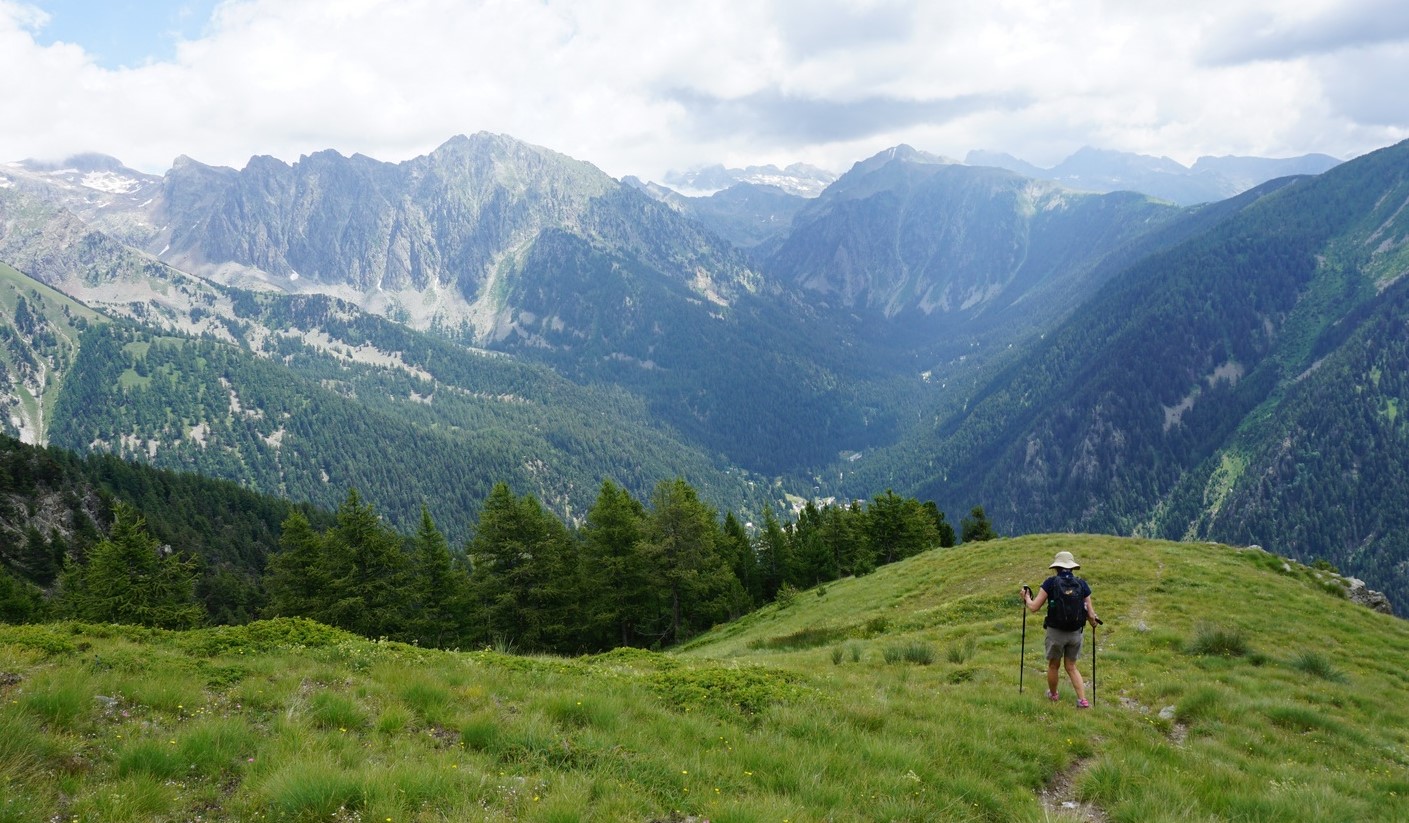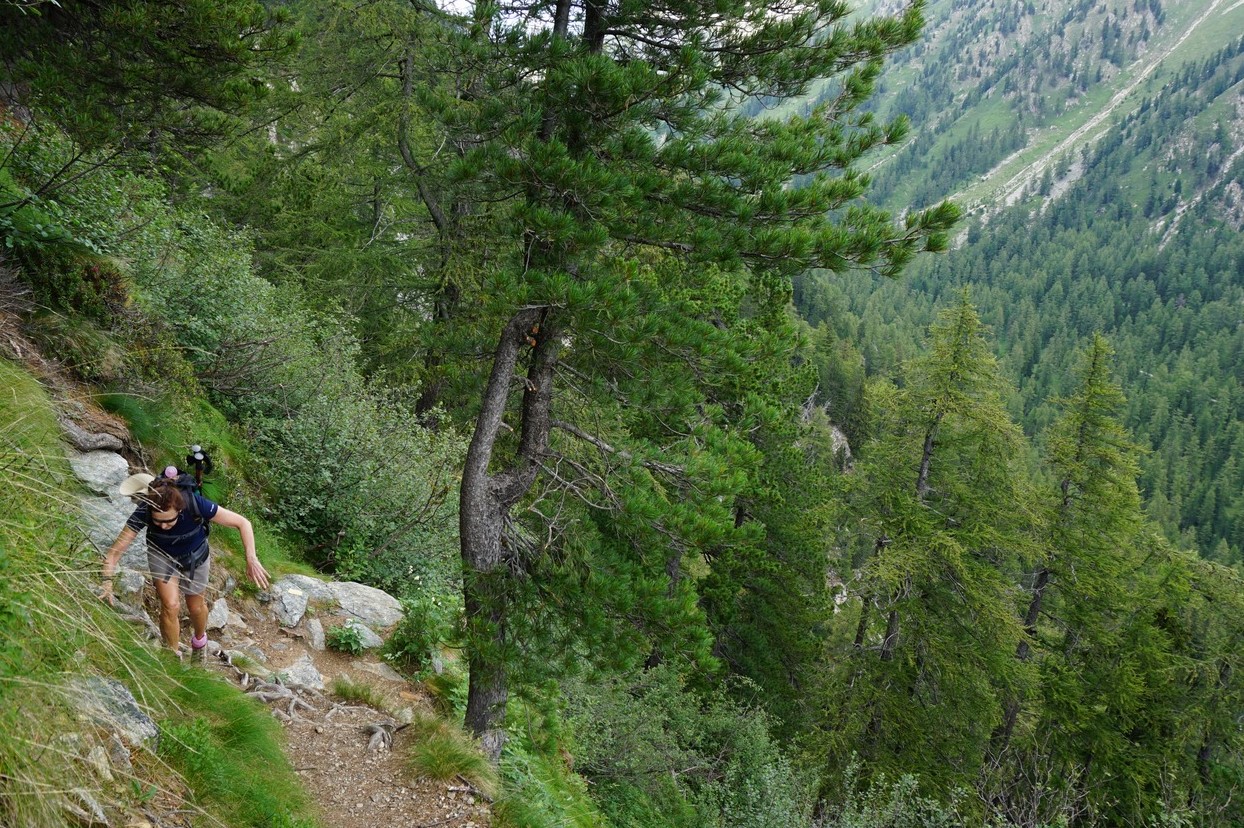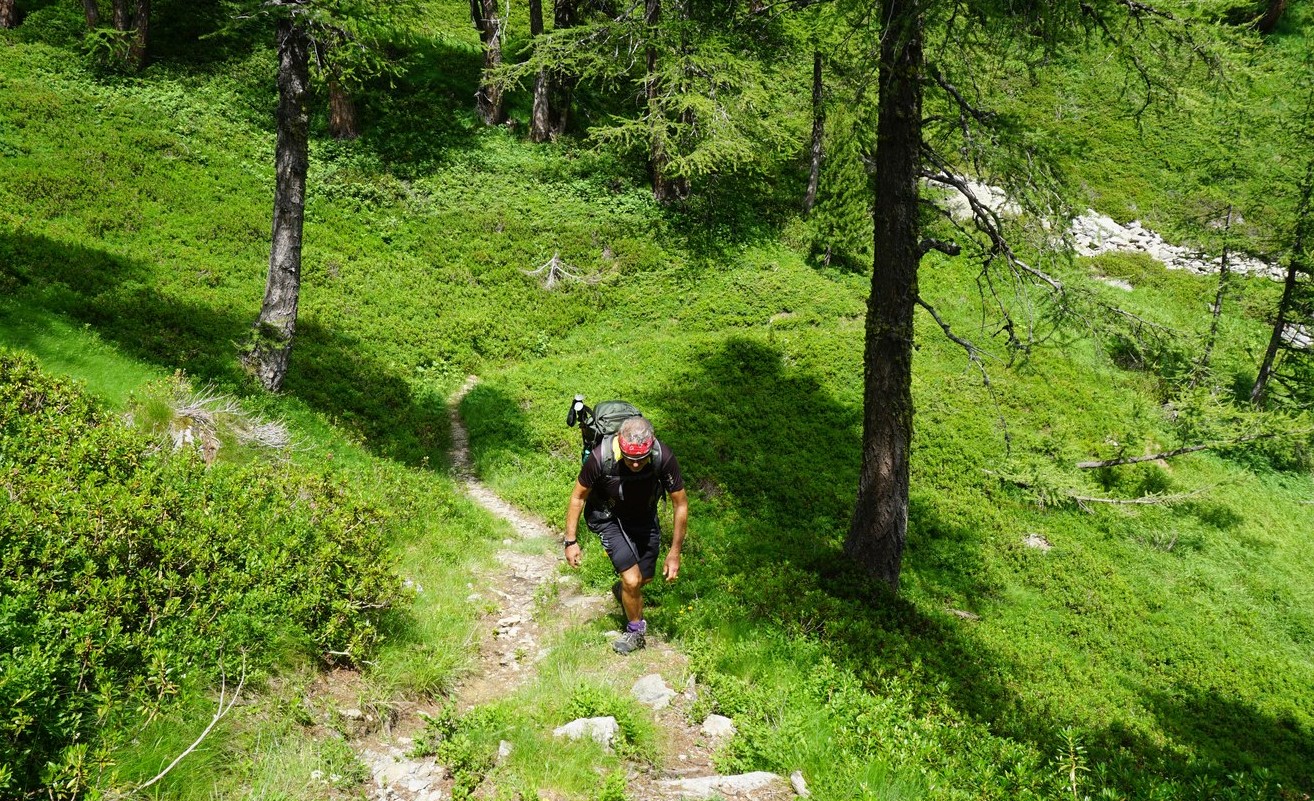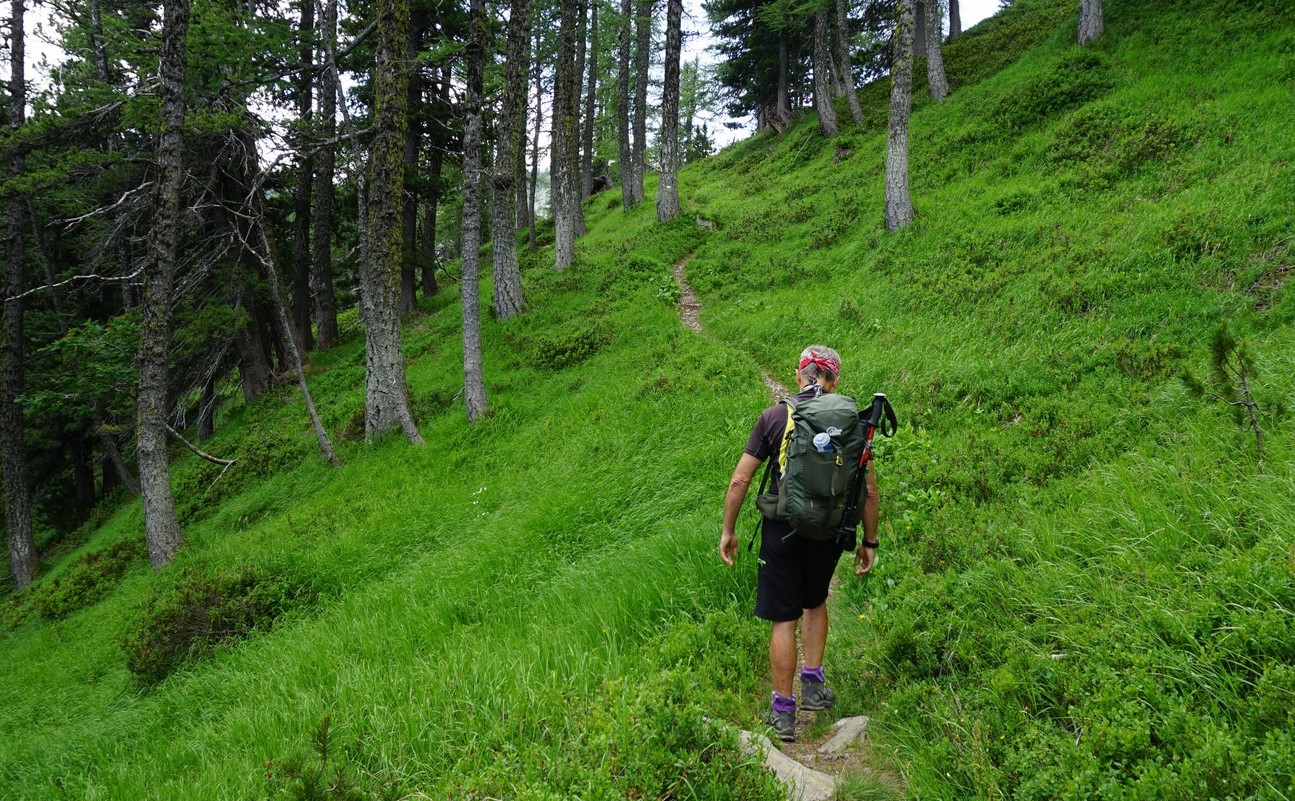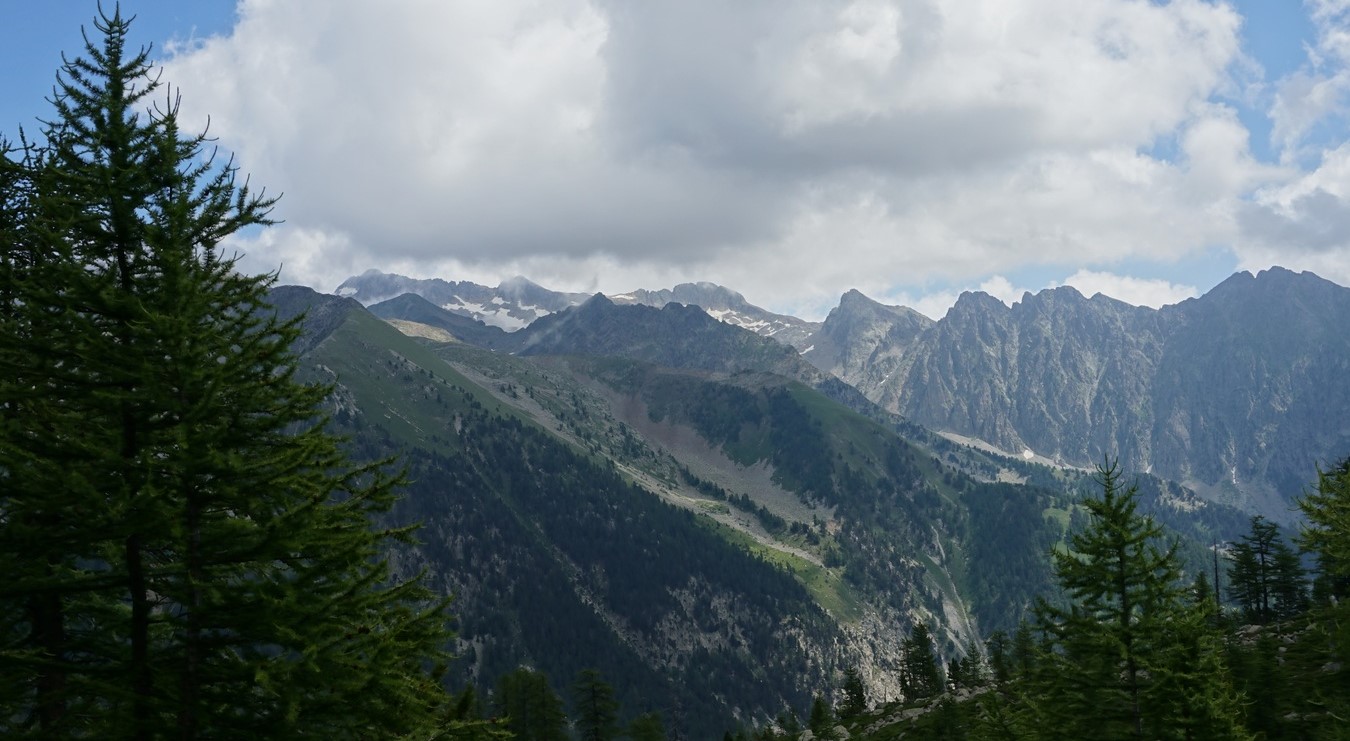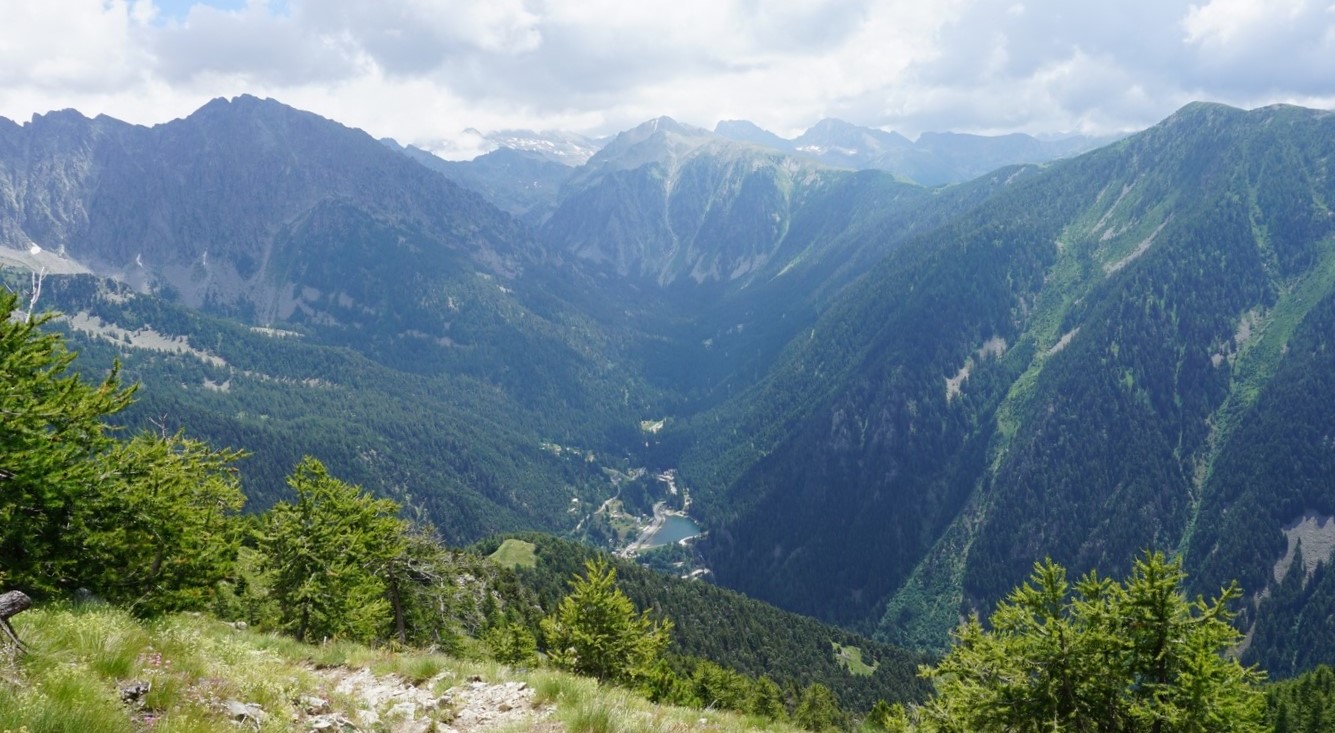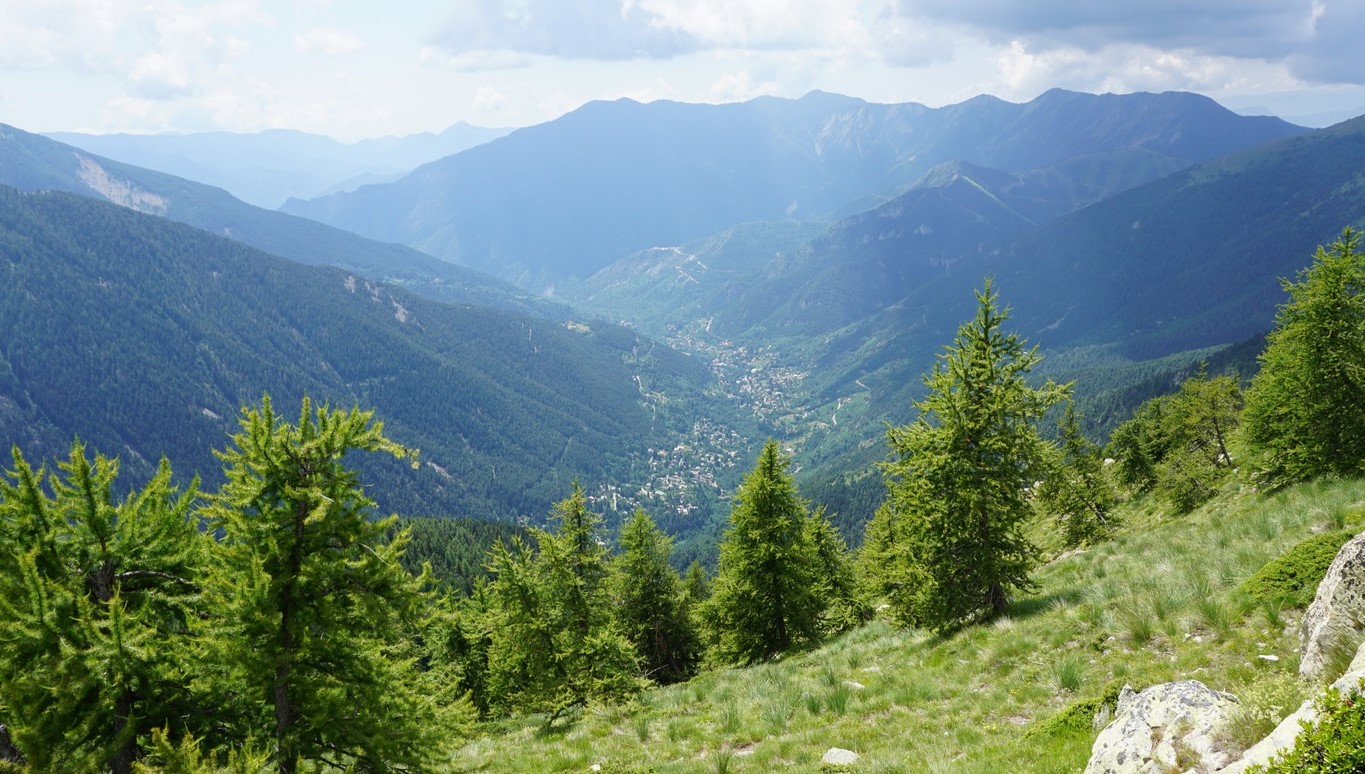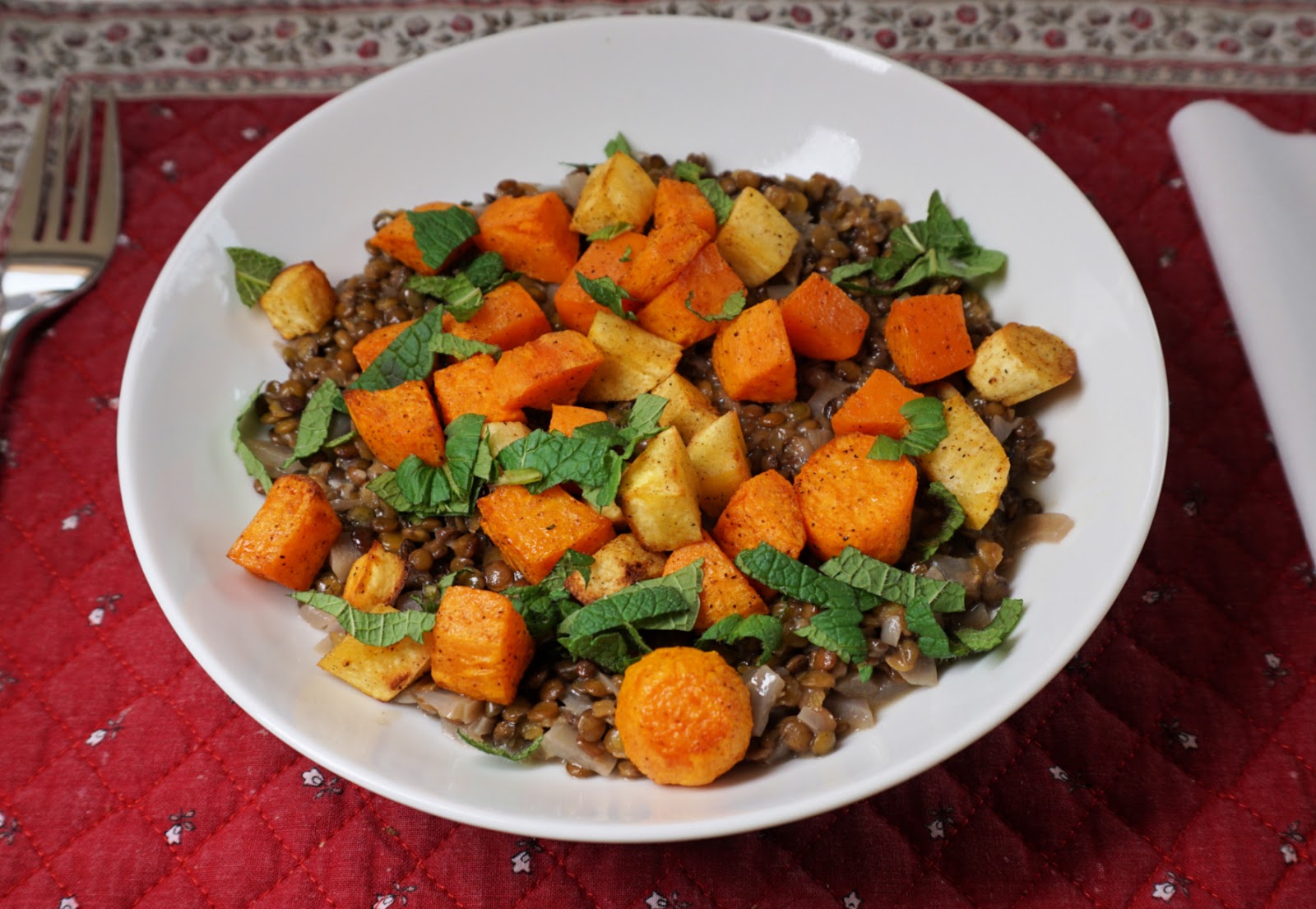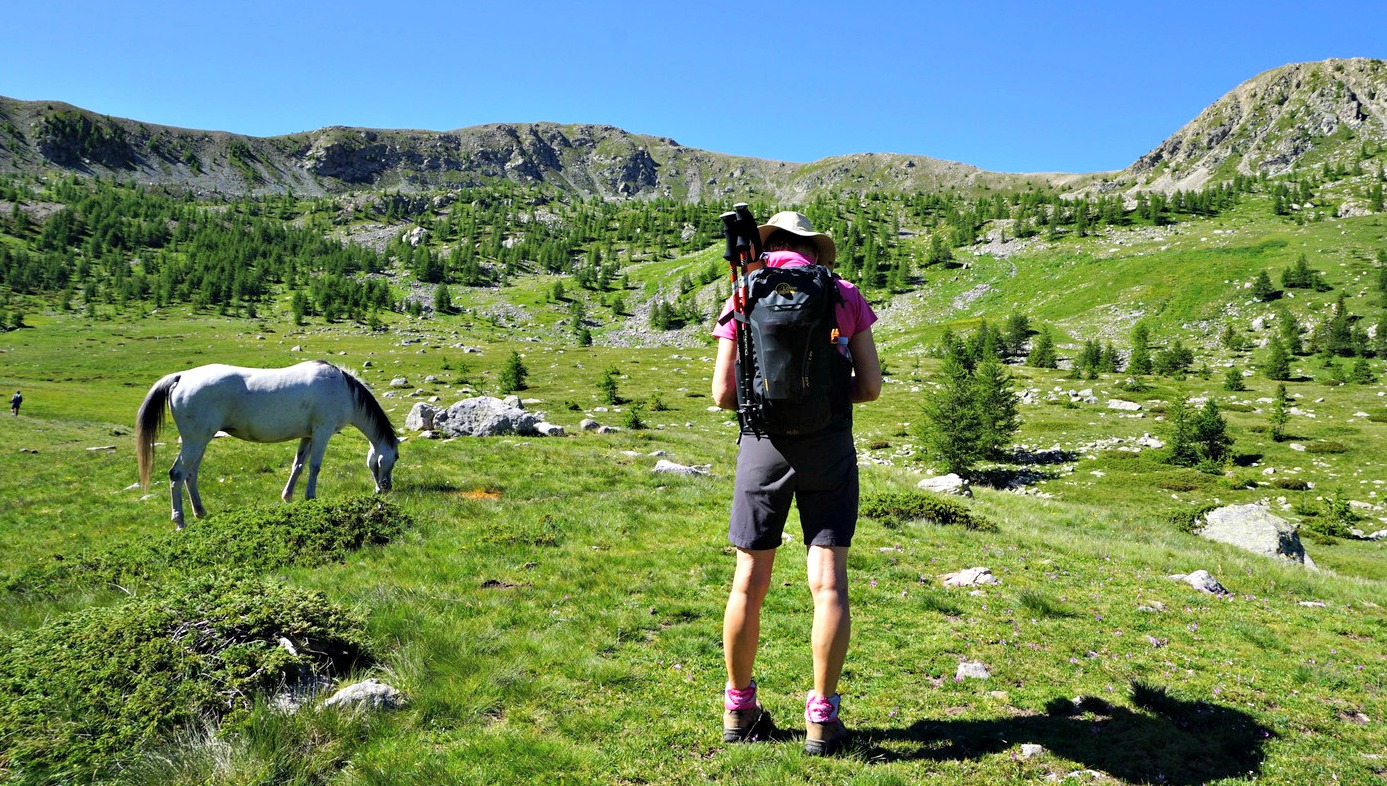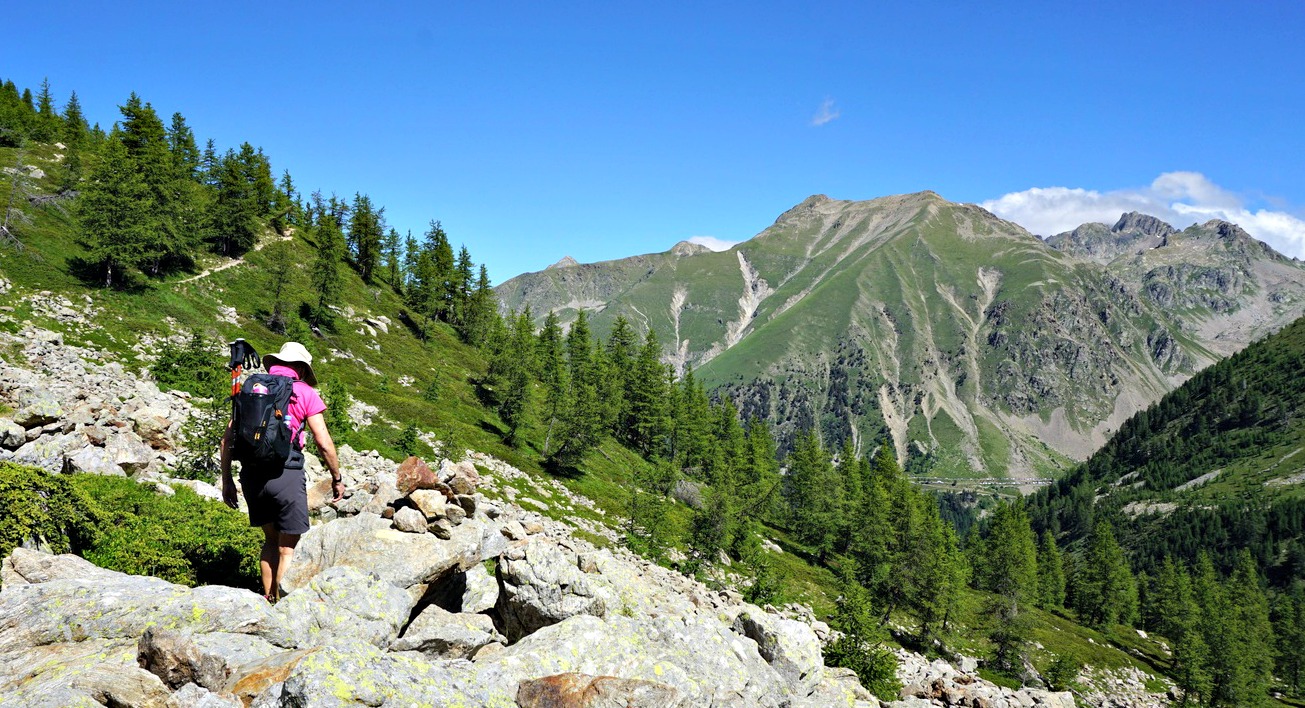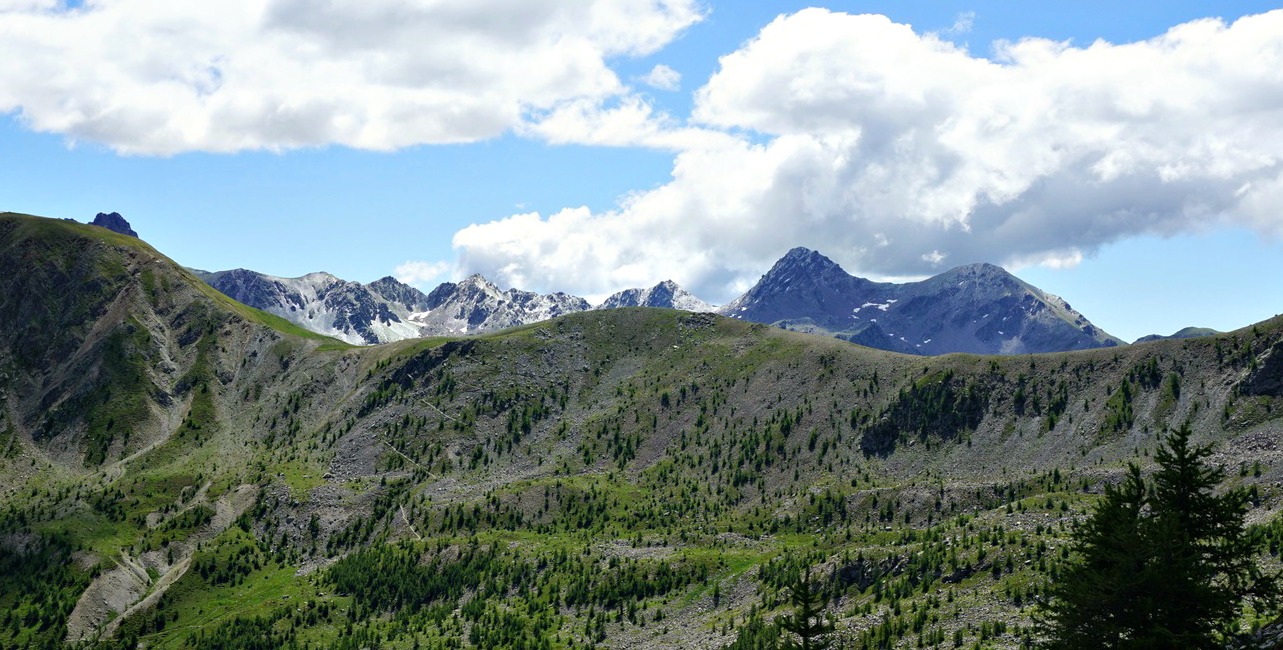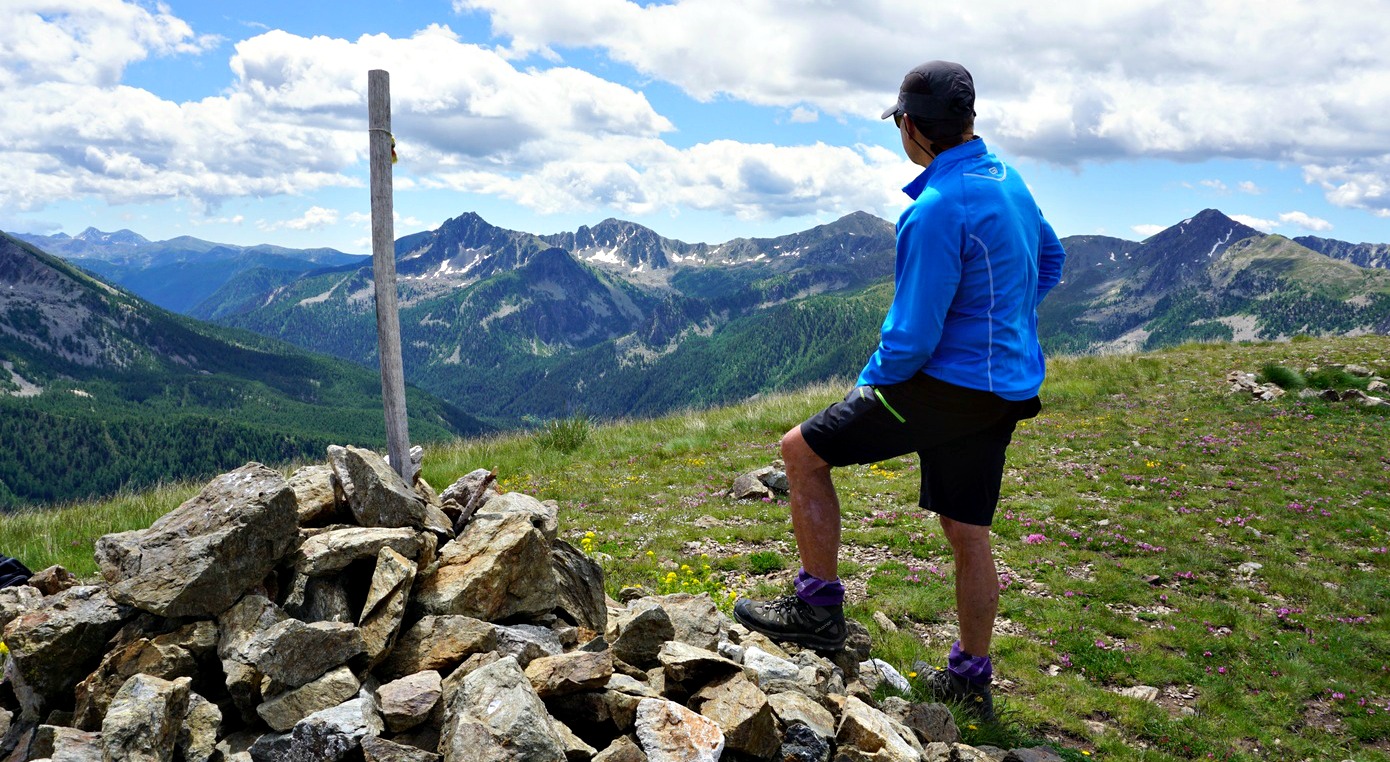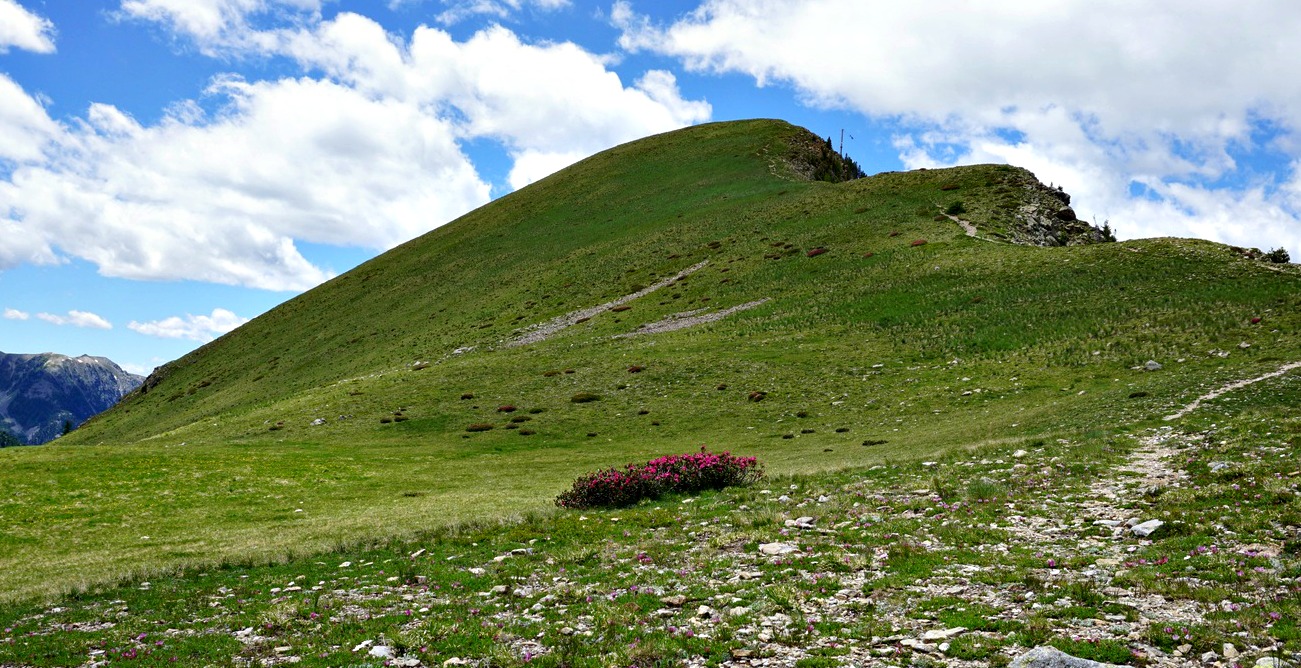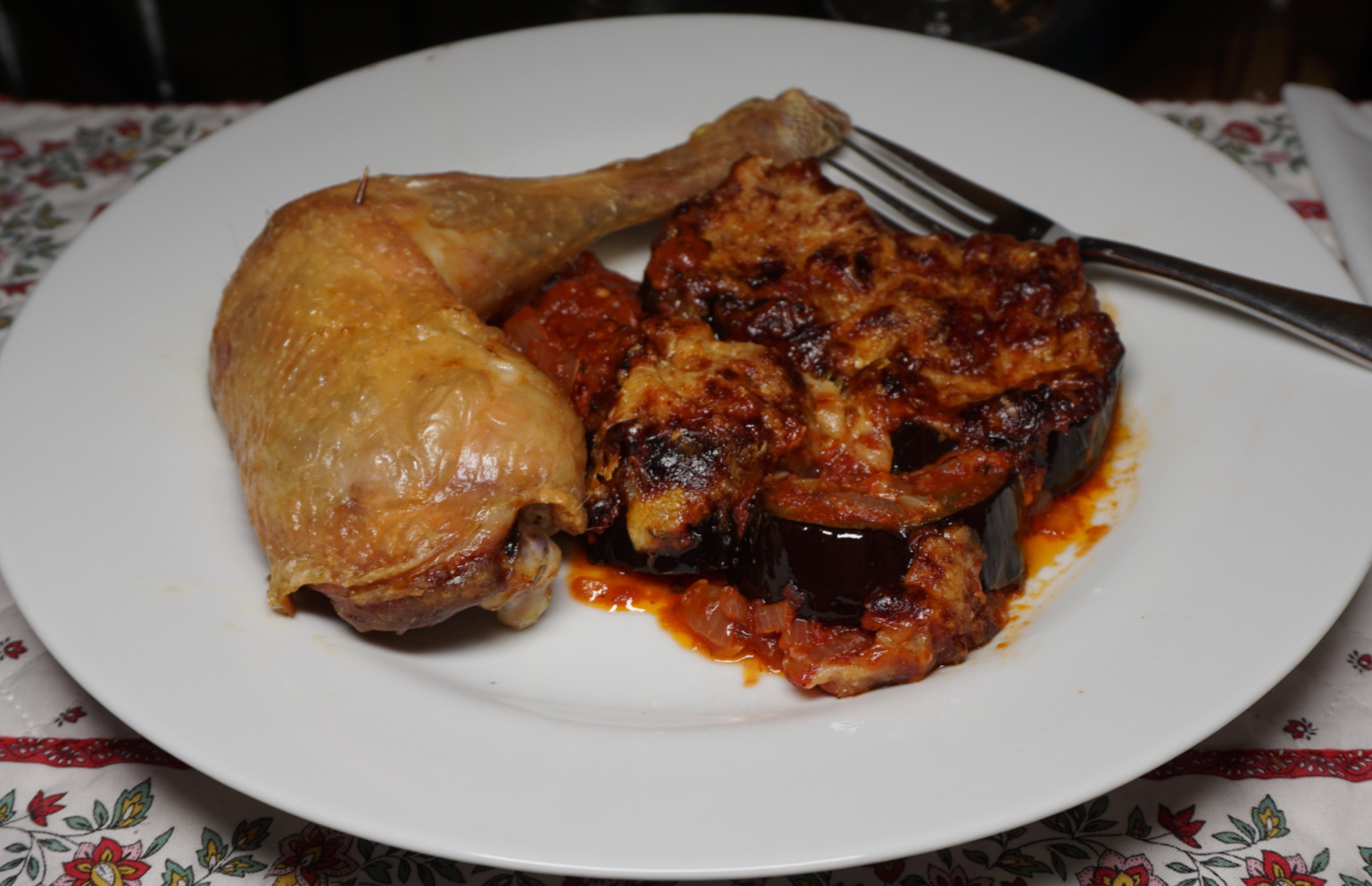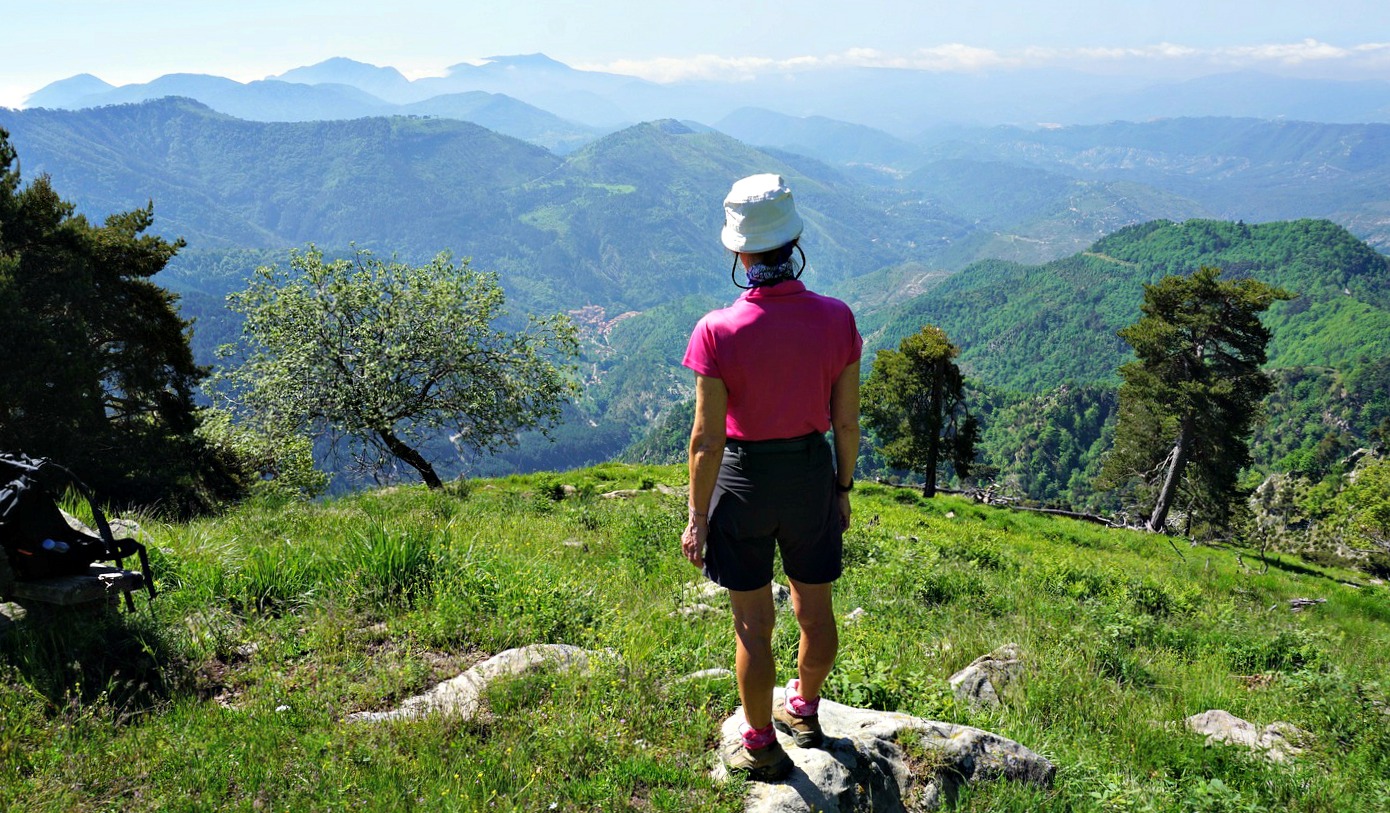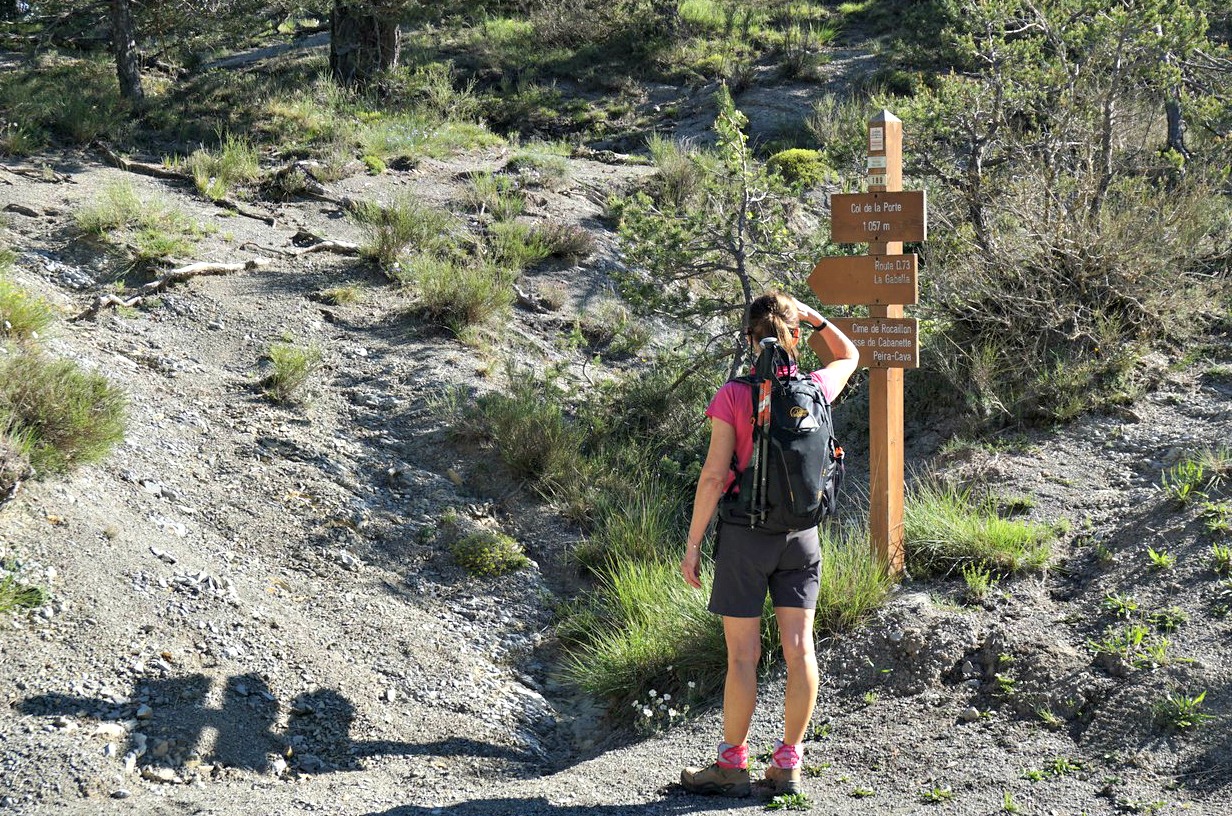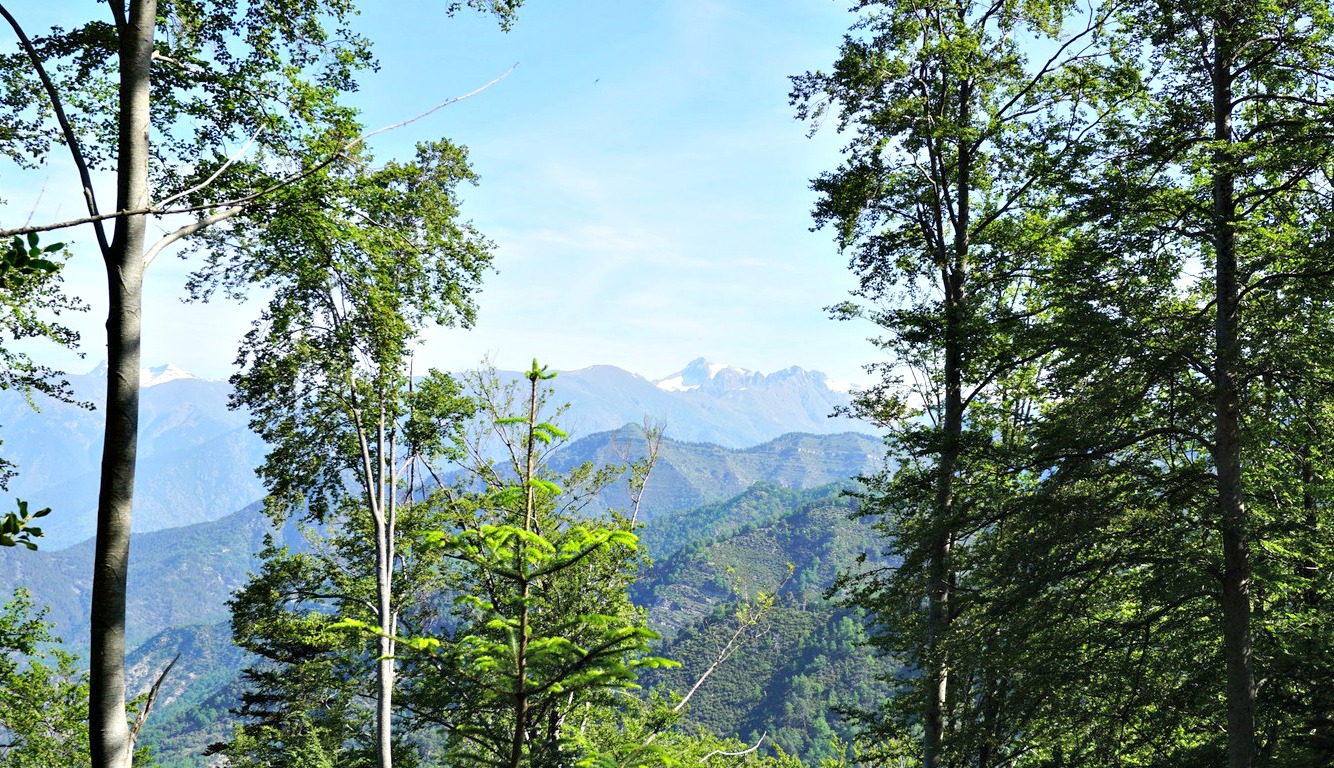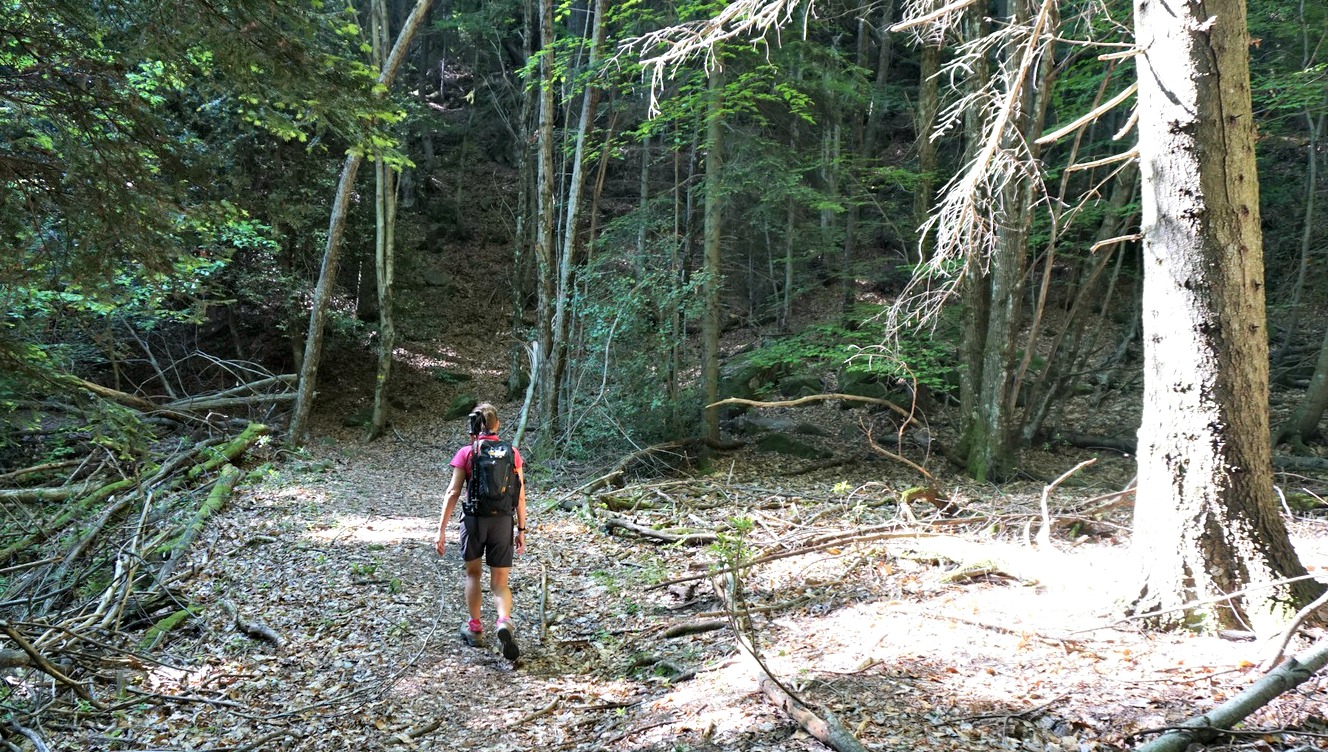The following loop hike is for forest lovers. Even though this itinerary mostly runs in the woods, there are several open stretches with great views down to Le Boréon (1500 m) as well as the Salèse and Vésubie River Valleys. Le Boréon 6 km north of St-Martin Vésubie is one of the most popular hiking areas of Alpes-Maritimes.
A paved but potholed road M89 goes up to the Salèse Valley parking (1690 m), bordering the Mercantour National Park. The most popular trail, the GR52, continues from here to north west to Col de Salèse.
Note that after the devastating storm Alex in early October 2020, all access to Boréon was cut. Currently there’s a very limited access (not for the public) as far as to the Lake Boréon. It remains to be seen if the connection can be established before the next summer.
From the Salèse Parking, another trail goes up to Lac des Adus and beyond. We have previously hiked to Mont Archas in this area.
The weather forecast for today’s hike was showers and thunderstorms in the afternoon (did not happen though!), and we wanted to avoid higher terrain. Besides, the forest above the Salèse Valley is most beautiful.
We crossed the stream along a wooden bridge to signpost #397 (Refuge et Lac des Adus etc). The climb in the forest was continuous. Just before the refuge, at signpost #396, we forked left(south) along a path that undulated in the verdant lower eastern flank of Mont Archas. Our trail connected with the trail descending from Mont Archas at signpost #393 (2242 m; the highest point of this hike). From this part of the trail, the views were excellent.
We descended rapidly, first along alpine meadows (above Serre Long), then again in the forest (Vallon du Champet) to signpost #391 where we forked left (north) to signpost #390. At signpost #398, we joined the GR52 and followed it back to our starting point, ascending about 110 m.
This itinerary was easy to follow. The paths were easy to see, markings were in yellow and the signposts clear.
Duration: 4h 10 active hiking time
Map: Vallée de la Vésubie 3741 OT
This dish makes a great vegetarian lunch in winter. It is a good source of antioxidants and vegetable protein. If possible, choose organic vegetables and herbs.
For a balanced meal serve some green salad, olive oil vinaigrette, and good wholemeal bread. If you can’t find raz el hanout in your shops you can make a spice mixture by using equal amounts of ground cinnamon, ground ginger, black pepper and ground paprika.
2 servings
For the green lentil risotto:
120 ml green lentils
1 small onion, chopped
1 clove garlic, minced
2 tbsp. olive oil
150 ml white wine
About 600 ml chicken stock (you may not use it all)
A generous handful of freshly grated parmesan
For the roasted root vegetables:
1 medium sweet potato
1 medium parsnip
1 tbsp. olive oil
1 tsp. raz el hanout
Chopped fresh herbs to decorate
Start with the green lentil risotto which takes about 30 minutes to cook. Warm the olive oil in a heavy casserole over medium-low heat and gently sautè the onion and garlic for about 10 minutes.
Then add the lentils and stir well so that they are coated with olive oil. Increase the heat to medium and continue cooking like you would a classic risotto by adding first small amounts of white wine and then chicken stock. NB! You don’t need to stir all the time because lentil risotto won’t achieve the same creaminess as classic rice risotto. The cooking time is about the same, 20- 25 minutes.
When the lentils are cooked, remove the casserole from heat and stir in the parmesan.
Meanwhile roast the root vegetables. Preheat the oven to 200°C, roast.
Peel the root vegetables and chop into smallish chunks. Place 1 tbsp. olive oil in a plastic bag with 1 tsp. raz el hanout and add the root vegetables. Give the plastic bag a good shake, then place the vegetables in a single layer in an oven-proof dish. Roast for about 15-20 minutes until the vegetables are soft.
Divide the green lentil risotto in the bottom of the bowls and the root vegetables on top. Decorate with fresh herbs.

Veal chops, mushrooms, and sweet potato purée are a tasty combination. Pork chops could be used instead of veal chops, they also go very well with mushrooms.
2 servings
2 nice veal chops
3 tbsp. olive oil
2 handfuls of mushrooms, sliced
1 shallot, chopped
1 clove garlic, minced
100 ml white wine
100 ml chicken stock
3 tbsp. crème fraîche, 15% fat
Leaves from a sprig of thyme
A sprig of rosemary
Freshly ground black pepper
Chopped fresh chives to decorate
For the sweet potato purée:
2 small to medium sweet potatoes
About 400 ml vegetable stock
1 tbsp. olive oil
Peel the sweet potatoes and cut into chunks. Place them in a casserole and cover with vegetable stock. Boil under lid until the sweet potatoes are soft, about 20 minutes. Keep warm and covered until you are ready to purée the sweet potatoes.
Preheat the oven to 180° C.
Heat 2 tbsp. olive oil over medium-high heat in a large heavy frying pan. Fry the veal chops for 1 minute each side. Transfer into an ovenproof dish and add the sprig of rosemary for flavour. Bake in the oven for20 minutes.
Add 1 tbsp. olive oil in the frying pan and fry the mushroom slices until golden brown.
While the mushrooms are cooking, make the sauce. Heat the white wine and chicken stock in a casserole. Add the shallot, garlic, thyme leaves, and black pepper and bring to a boil. Cook about 10 minutes until the sauce has reduced. Then whisk in the crème fraîche and add the mushrooms.
While the sauce is reducing finish the sweet potato purée. Pour most of the vegetable stock from the casserole into a bowl but don’t discard yet. Add 1 tbsp. olive oil to the sweet potato chunks and press into a purée. Add more stock if needed for a nice consistence.
Serve the chops with sweet potato purée and divide the mushroom sauce over the veal. Decorate with chopped chives.
This is a warming and effortless one-pot dish, just perfect for cold winter evenings.
2 servings
About 300- 400 g fat- free pork
2 carrots
1 medium sweet potato
2 shallots
1 clove garlic
8 pitted prunes
About 250 ml chicken stock
1 tbsp. olive oil
1 tsp. Piment d’Espelette or other mild chilli powder
A pinch of saffron
Parsley to decorate
Warm the olive oil over medium heat in a heavy cocotte, casserole, such as Le Creuset. Cut the pork into about 4 cm x 4 cm pieces and sauté for about 5 minutes, stirring occasionally.
Peel and halve the shallots and add to the casserole. Add the chicken stock, minced garlic, saffron, and Piment d’ Espelette.
Preheat the oven to 200° C.
Slice the carrots and add to the casserole. Peel the sweet potato, cut into chunks and add to the casserole. Add the prunes and bring to the boil.
Transfer the casserole to the oven and cook for about 45 minutes until the root vegetables are soft. Check occasionally; if the stew gets too dry add a little water.
Divide the stew on the plates and decorate with parsley.
This is a super quick recipe if you use cooked or tinned white beans and cooked peeled shrimp. Served with a green side salad, and some bread if you wish, it makes a perfect balanced winter lunch.
2 servings
2 tbsp. olive oil
2 shallots, chopped
1 clove garlic, minced
About 16 cherry tomatoes
100 ml white wine
1 tsp. dried Provençal herbs
2 tbsp. pitted black olives
1 tsp. Piment d’Espelette or other mild chilli powder
About 200- 250 ml cooked white beans or a small tin of white beans
About 150- 200 g cooked shrimp
Parsley to decorate
Heat the olive oil over medium heat in a large frying pan. Sauté the shallots and garlic for about 5 minutes together with the cherry tomatoes.
Add the white wine, Provençal herbs, and Piment d’Espelette. Add the cooked beans and black olives and stir. If using tinned beans, rinse them first under running water. Cook the stew for about 10 minutes until hot.
Add the shrimp, stir and cook for about 2 minutes until reheated. Divide into two bowls and decorate with parsley.
This is a rich vegetable side best served with a simple piece of grilled lamb or roasted chicken. In summer, you can make it with fresh tomatoes which in winter can be substituted with good Italian tomato sauce. Freshly grated parmesan cheese is a must for this gratin.
Aubergine is known for its capacity to soak up oil or butter if you fry the slices. I have started to roast the slices in the oven and this helps to control the amount of olive oil needed. Slice the aubergine rather thickly, brush the slices on both sides with a little olive oil and roast until soft. This takes about 20 minutes in 200° C. Then use the roasted slices for the gratin.
2 servings
1 medium aubergine, rather thickly sliced
Olive oil
1 medium onion, chopped
1 clove garlic, minced
1 tsp. dried Provençal herbs
200 ml Italian tomato sauce or 3- 4 fresh tomatoes plus a little tomato paste
Freshly ground black pepper
A handful of grated parmesan
Preheat the oven to 200° C, roast.
Place the aubergine slices in one layer on an oven- tray lined with baking paper. Lightly brush with olive oil and roast for about 20 minutes until soft.
Meanwhile warm 1 tbsp. olive oil over medium heat in a frying pan and sauté the onion and garlic for 10 minutes until soft but not browned. Add the tomato sauce or the fresh chopped tomatoes and some tomato paste. Add the herbs and black pepper, stir and continue cooking until the sauce is nice and thick, about 5 minutes if using tomato sauce and about 10- 15 minutes if using fresh tomatoes.
Lightly oil a gratin dish with olive oil. Spread a thin layer of tomato sauce in the bottom and place the aubergine slices on the sauce. Top with the rest of the tomato sauce and divide the parmesan over the sauce. Sprinkle with a little olive oil. Roast for about 20 minutes until the cheese is nicely browned.

This tasty pork tenderloin, filet mignon de porc, recipe comes from the Basque country. I have somewhat modified the original recipe but I always use Piment d’Espelette, the local mild pepper, for more authenticity. Serve this hearty country dish with blond lentils.
2 servings
1 pork tenderloin, about 400- 500 g, cut into thick slices
2 tbsp. olive oil
1 medium onion, chopped
1 clove garlic, minced
1 red bell pepper, chopped
1 green bell pepper, chopped
150 ml red wine
100 ml tomato sauce
1 tsp. Piment d’ Espelette or other mild pepper
1 tsp. Provençal herbs
2 tbsp. black olives
Preheat the oven to 200°C, roast.
Heat the olive oil over medium heat in a large heavy casserole, such as Le Creuset, and fry the pork slices for a few minutes until golden brown. Turn the slices and add the bell peppers, onion, and garlic. Continue frying stirring frequently for about 5 minutes.
Add the wine, tomato sauce, Piment d’Espelette, and olives. Stir and bring to the boil. Then transfer the casserole into the oven for 30 minutes. NB! Do not cover, roasting will give the meat and vegetables a nice colour.
Meanwhile cook the blond lentils which take about 25 minutes.
Divide on the plates. Voilà!
Cime de Rocaillon (1444 m) is a less visited mountain top in Nice hinterland, moyen pays, about 24 km from Nice seafront as the crow flies.
The views south and southeast do not disappoint. The medieval village of Lucéram (650 m) is clearly visible deep down in the Paillon River Valley.
From Nice, we drove to Luceram along D2566, and further to Col St-Roch where we took the D73. We parked at Col de la Porte (1057 m) which was the highest point of the road; 35 km from downtown Nice. From Col de la Porte, the summit can be reached with a very moderate effort. Starting from Lucéram is a good option if you wish to do a longer hike but that requires more than twice as much climbing.
From Col de la Porte, we started from signpost #189, and ascended gradually along a nice and soft forest trail. The direction of the trail soon turned to south-southeast. We ascended more steeply, reaching the D2566 road and signpost #193. We crossed the road and found our trail that now became narrower, running in an easterly direction along a grassy ridge to Cime de Rocaillon. At some points the trail was almost ingrown but don’t worry, you won’t get lost if you just stay on the ridge.
On this super spring day, we had the summit and the great forest trail all for ourselves! We can definitely call it an off the beaten track. In short, it was a great half-day itinerary with super views, a pleasant forest trail with a moderate ascent!
Distance: 5.9 km
Climb: 390 m
Duration: 2h 30 active
Map: Vallées de la Bévéra et des Paillons TOP 25 N°o 3741 ET


